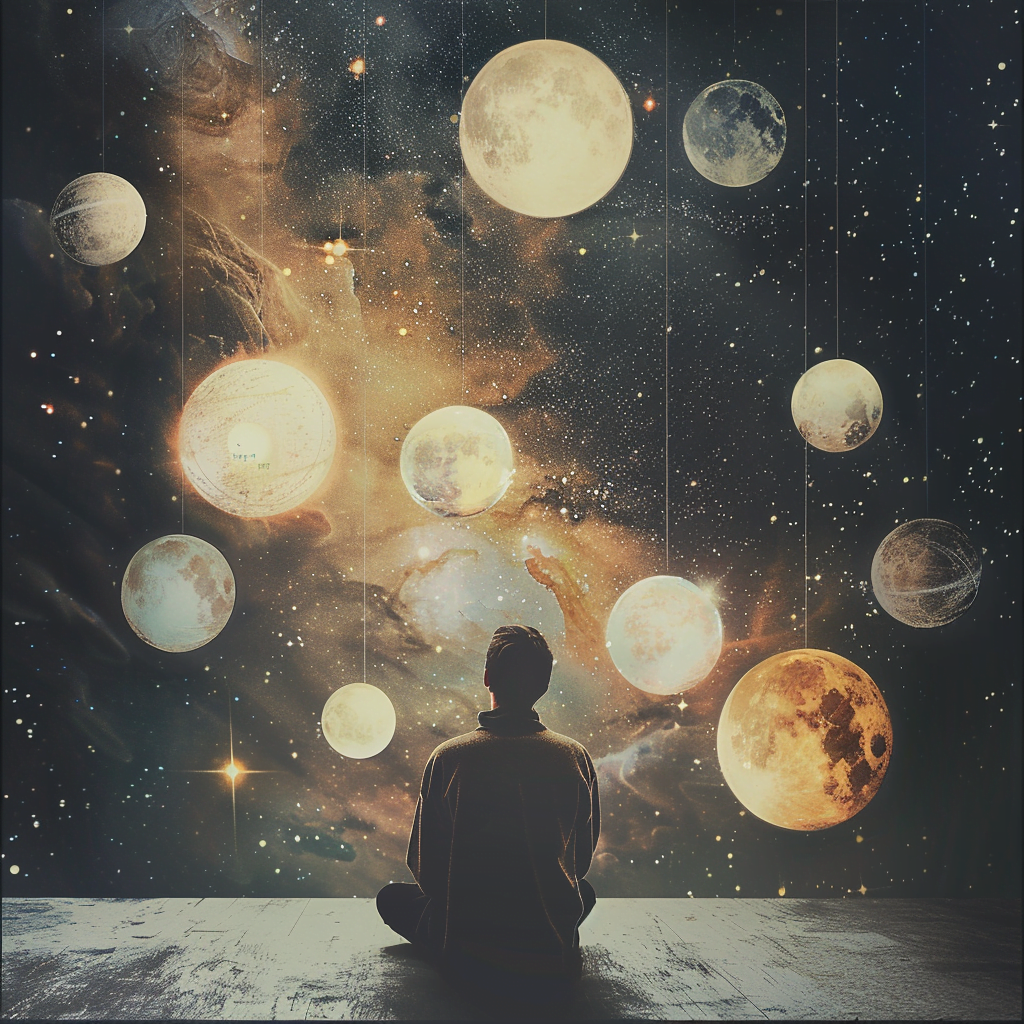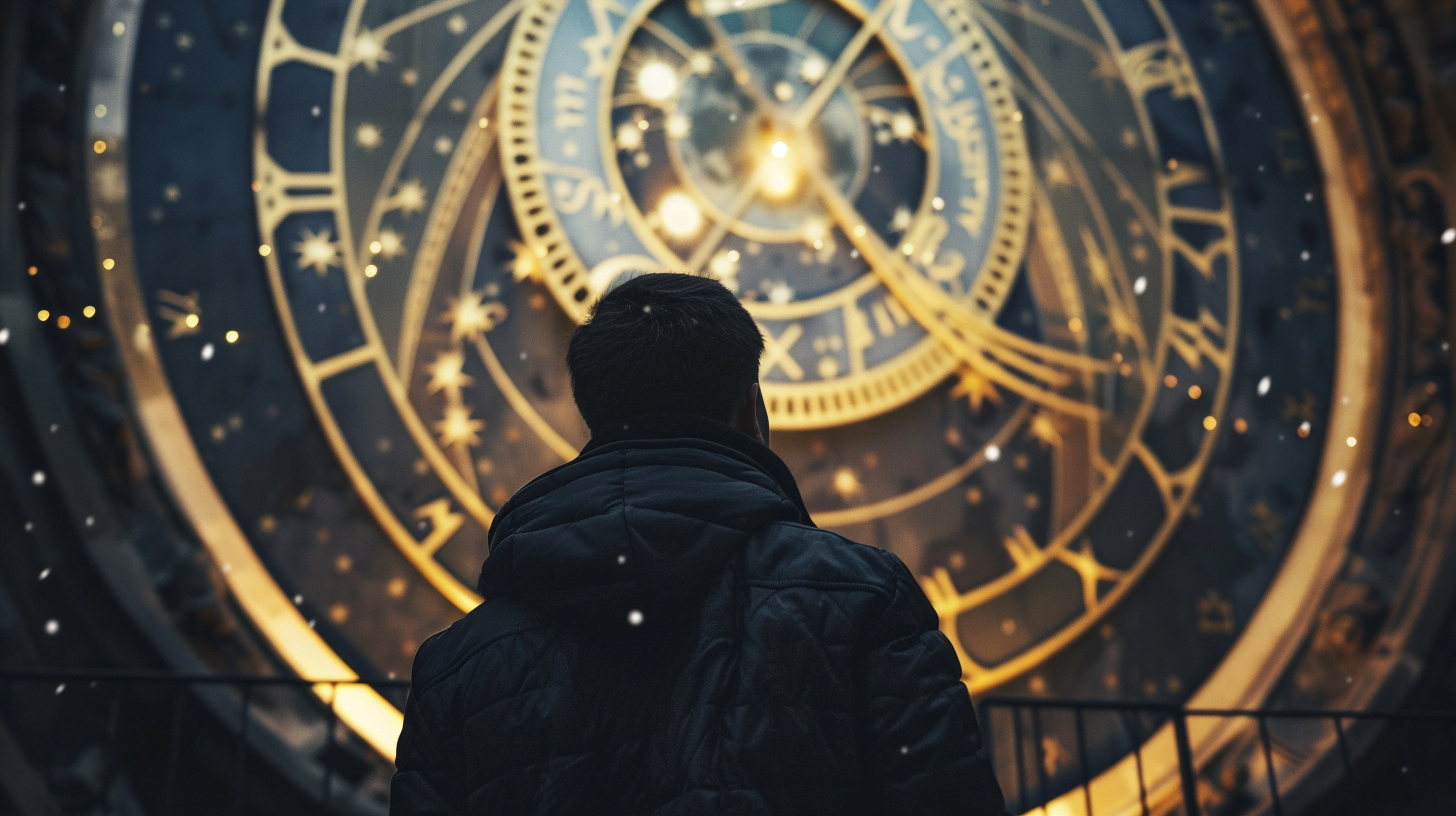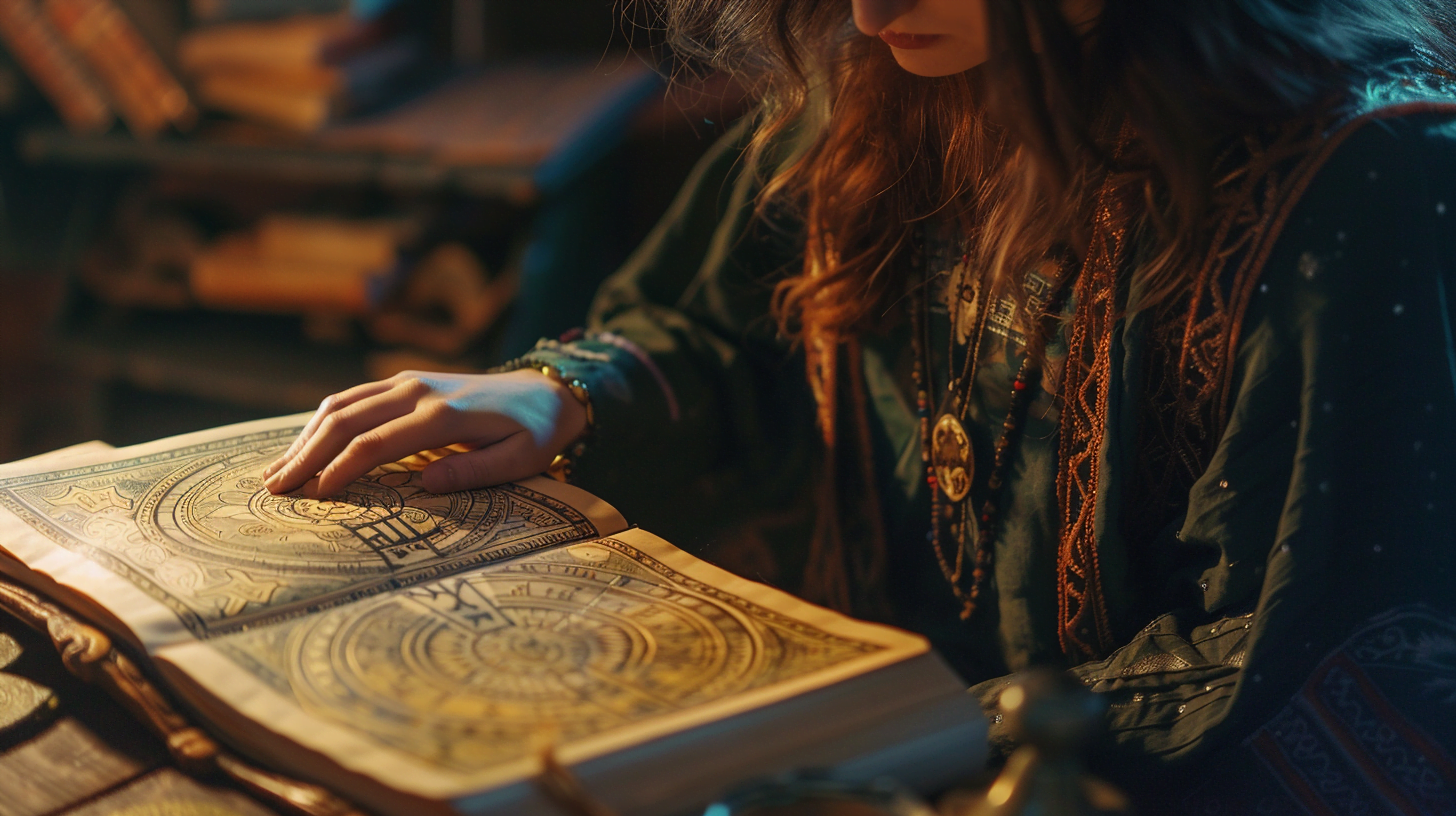What Do Orbs Mean In Astrology? In the fascinating world of astrology, the presence of orbs holds great significance. These ethereal orbs, mystical in nature, are said to enhance the power and energy of celestial bodies as they align in the cosmic dance of the universe.
From the moment you dive into the captivating realm of astrology, you’ll find that orbs serve as valuable tools, illuminating the intricate connections between planets and influencing the interpretation of astrological charts. With their enchanting presence, these orbs offer a deeper understanding of how planetary energies intertwine, unveiling secrets and unlocking a world of meaning within the astrological realm. As you explore the meaning of orbs in astrology, a whole new layer of insight is revealed.
The Basics of Astrology Orbs
Definition of Orbs in Astrology
In astrology, orbs refer to the allowable degree of difference or tolerance that is used to determine the strength and significance of planetary aspects and planetary placements within a natal chart or horoscope. Orbs essentially measure the distance that a planet or point can deviate from its exact position while still being considered in aspect. They play a crucial role in interpreting and analyzing astrological charts as they help astrologers determine the strength and influence of each aspect.
How Orbs are Calculated
Calculating orbs in astrology involves determining the acceptable range of degrees within which a planetary aspect can be considered valid. The size of an orb may vary depending on the type of aspect being analyzed and the astrological tradition being followed. The calculation typically considers factors such as the speed of the planets involved, the nature of the aspect, and the overall significance of the planets within a chart. Astrologers often use personal judgment and experience to determine the appropriate orbs for interpretation, taking into account both the traditional guidelines and their own intuitive understanding.
Importance of Orbs in Astrology
Orbs play a significant role in astrology as they provide a framework for understanding the strength and impact of planetary aspects within a chart. They help astrologers assess the intensity and influence of different planetary energies and determine the level of harmony or tension between them. By considering the size of the orbs, astrologers can gain insights into the overall dynamics of a chart and identify potential areas of focus for further interpretation. Understanding orbs allows for a more nuanced and accurate analysis of astrological charts, enabling astrologers to provide valuable insights and guidance to individuals seeking self-awareness and personal growth.
Interpreting Orbs in Natal Charts
Planetary Aspects and Orbs
When analyzing a natal chart, orbs are crucial in determining the strength and significance of the various planetary aspects. Planetary aspects represent the angles formed between two or more planets within a chart and provide insights into the relationships and interactions between different areas of life represented by the planets. By considering the orbs, astrologers can assess the tightness and proximity of the aspects, indicating the level of potency and impact on an individual’s personality, experiences, and potentials.
Major vs Minor Aspects
In astrology, aspects can be categorized into major and minor aspects based on their significance and impact. Major aspects include the conjunction (0 degrees), opposition (180 degrees), trine (120 degrees), square (90 degrees), and sextile (60 degrees). Minor aspects, such as the semi-sextile (30 degrees) and quincunx (150 degrees), have a lesser degree of influence. Orbs play a crucial role in determining whether an aspect falls within the major or minor category, as tighter orbs are typically associated with major aspects, while wider orbs may denote minor aspects.
Orb Size and Aspect Strength
The size of the orb directly affects the strength and potency of a planetary aspect within a natal chart. Tighter orbs indicate a more powerful and immediate influence, highlighting a greater intensity and impact on an individual’s life. On the other hand, wider orbs signify a more diluted or softer influence, suggesting that the aspect may manifest with less intensity or be more challenging to fully express. Interpreting the size of the orbs allows astrologers to discern the varying degrees of aspect strength and understand the specific dynamics at play within a chart.

Using Orbs in Transit and Progressions
Transit Aspects and Orbs
Transit aspects involve the movement of planets in the sky as they form angles to a person’s natal chart. Orbs are critical in transit astrology as they determine the timing and duration of the planetary influences and their effects on an individual’s life. By considering the size of the orbs during transit analysis, astrologers can assess the strength and significance of the transit aspects. Tight orbs indicate more potent and immediate effects, while wider orbs suggest a gradual and less intense impact.
Progressed Aspects and Orbs
Progressions refer to the symbolic movement of the natal planets over time, reflecting an individual’s inner growth and development. Progressed aspects are formed when the progressed positions of the planets align with the natal positions or form aspects with other progressed planets. Orbs are crucial in interpreting progressed aspects as they indicate the strength and duration of the progressed influences. Tighter orbs suggest significant life developments and profound changes, while wider orbs may imply subtler shifts or longer-lasting influences.
Orbs and Timing of Events
By considering the orbs in transit and progressions, astrologers can gain insights into the timing of significant events in an individual’s life. The tighter the orbs, the more immediate and precise the timing may be. For example, a transit aspect with a tight orb may indicate an upcoming event or experience that directly corresponds to the astrological symbolism. On the other hand, wider orbs may suggest a broader timeframe or a more indirect manifestation of the planetary energies. Understanding orbs in transit and progressions can assist astrologers in providing timing predictions and helping individuals navigate important life transitions.
Orbs in Synastry and Relationship Astrology
Synastry Aspects and Orbs
Synastry refers to the comparison and analysis of two or more individuals’ natal charts to determine the dynamics and compatibility of their relationships. Orbs play a crucial role in synastry as they reveal the strengths and challenges in the connections between the planets of the partners. Tight orbs in synastry aspects suggest a significant and immediate impact on the relationship, indicating intense dynamics and powerful connections. Wider orbs may suggest a more subtle or less pronounced influence, highlighting areas of compatibility or potential growth within the relationship.
Composite Chart Aspects and Orbs
A composite chart is a combined chart created by merging the natal charts of two individuals to represent the energy and dynamics of their relationship as a single entity. Orbs in composite chart aspects determine the strength and influence of the shared energies between the partners. Tight orbs suggest a powerful and immediate impact on the relationship, indicating areas of intensity and strong connection. Wider orbs in composite chart aspects may suggest a more relaxed or less focused influence, highlighting areas of compatibility or potential growth within the relationship.
Using Orbs to Analyze Compatibility
By analyzing the orbs in synastry and composite chart aspects, astrologers can gain valuable insights into the compatibility and dynamics of relationships. The size of the orbs can indicate the level of intensity, harmony, or tension between the planets of the partners. Tight orbs often highlight areas of immediate attraction, intense connection, or possible challenges within the relationship. Wider orbs may reveal areas of shared understanding, growth potential, or compatibility that may be expressed in a subtler or less dramatic manner. Understanding orbs in relationship astrology allows individuals to deepen their self-awareness and navigate their connection with others effectively.

The Role of Orbs in Horary Astrology
Horary Astrology Basics
Horary astrology is a branch of astrology that focuses on answering specific questions or addressing immediate concerns through the casting of a horary chart. Orbs in horary astrology help determine the validity and relevance of the aspects formed at the time of the question. By using specific orb sizes, astrologers can assess the strength and significance of the aspects in relation to the specific issue being addressed.
Orbs and Aspect Patterns in Horary Astrology
Aspect patterns in horary astrology provide valuable insights into the dynamics and potential outcomes of the situation in question. Orbs play a crucial role in determining the strength and influence of these aspect patterns. Tight orbs may suggest a more immediate and potent outcome, indicating a high probability of resolution or manifestation. Wider orbs may imply a more gradual or nuanced outcome, highlighting the need for patience and further investigation.
Interpreting Orbs in Horary Charts
Interpreting orbs in horary charts involves considering the specific nature of the question and the overall context of the chart. Astrologers take into account the size of the orbs to assess the strength and relevance of the aspects formed at the time of the question. Tight orbs indicate a stronger and more significant impact, suggesting a direct outcome related to the question. Wider orbs may imply a more indirect or less straightforward outcome, requiring additional analysis or consideration.
Orbs and Planetary Bodies
Sun and Orbs
The Sun in astrology represents the core essence and identity of an individual. When considering orbs for the Sun, a tight orb is generally preferred as it signifies a more immediate and potent influence on the person’s character, vitality, and self-expression. Wider orbs for the Sun may still hold significance but imply a more diluted or less focused impact.
Moon and Orbs
The Moon in astrology represents emotions, instincts, and the subconscious mind. Tight orbs for the Moon indicate a stronger and more immediate impact on an individual’s emotional well-being, habits, and instincts. Wider orbs for the Moon may still have relevance but suggest a more diffuse or less consistent emotional influence.
Mercury and Orbs
Mercury represents communication, intellect, and mental processes in astrology. When assessing orbs for Mercury, tight orbs suggest a more immediate and pronounced effect on an individual’s thinking, communication style, and cognitive abilities. Wider orbs for Mercury may still play a role but imply a more diffuse or less direct mental influence.
Venus and Orbs
Venus represents love, relationships, beauty, and harmony in astrology. Tight orbs for Venus suggest a more immediate and powerful impact on an individual’s romantic inclinations, aesthetic preferences, and social interactions. Wider orbs for Venus may indicate a more subtle or less pronounced influence on these areas of life.
Mars and Orbs
Mars represents energy, passion, assertiveness, and action in astrology. Tight orbs for Mars indicate a more immediate and intense impact on an individual’s drive, physical energy, and assertiveness. Wider orbs for Mars may still hold significance but suggest a milder or less potent influence in these areas.
Jupiter and Orbs
Jupiter represents expansion, growth, abundance, and wisdom in astrology. Tight orbs for Jupiter indicate a more amplified and immediate impact on an individual’s beliefs, values, opportunities, and broader life experiences. Wider orbs for Jupiter may still be relevant but suggest a more diluted or less intense influence.
Saturn and Orbs
Saturn represents structure, discipline, responsibility, and limitations in astrology. Tight orbs for Saturn suggest a more immediate and pronounced impact on an individual’s sense of responsibility, discipline, and life lessons. Wider orbs for Saturn may still have significance but imply a more diffuse or less focused influence in these areas.
Uranus and Orbs
Uranus represents innovation, originality, rebellion, and unpredictability in astrology. Tight orbs for Uranus indicate a more immediate and heightened impact on an individual’s need for freedom, unique expression, and urge for change. Wider orbs for Uranus may still play a role but suggest a more diluted or less immediate influence.
Neptune and Orbs
Neptune represents spirituality, dreams, illusions, and psychic sensitivity in astrology. Tight orbs for Neptune suggest a more immediate and profound impact on an individual’s imagination, intuitive abilities, and spiritual inclinations. Wider orbs for Neptune may still hold significance but imply a subtler or less pronounced influence.
Pluto and Orbs
Pluto represents transformation, power, regeneration, and deep psychological processes in astrology. Tight orbs for Pluto indicate a more immediate and intense impact on an individual’s capacity for personal transformation, power dynamics, and profound change. Wider orbs for Pluto may still have relevance but suggest a more gradual or less direct influence in these areas.

Orbs in Different Astrological Traditions
Western Astrology Orbs
Western astrology has various approaches to orbs, ranging from more traditional and strict interpretations to more modern and flexible ones. Some astrologers adhere to specific orb sizes based on traditional guidelines, while others use wider orbs to accommodate a more holistic and inclusive approach. The size of the orbs in Western astrology may depend on the type of aspect, the planets involved, and personal preferences of the astrologer.
Vedic Astrology Orbs
Vedic astrology, also known as Jyotish, has its own approach to orbs. Vedic astrologers often use tighter orbs compared to Western astrology, emphasizing the precision and accuracy of the planetary placements and aspects. The size of the orbs in Vedic astrology may vary depending on the specific aspect being analyzed, the houses involved, and the dasha (planetary period) system being utilized.
Chinese Astrology Orbs
Chinese astrology, based on lunar cycles and the Chinese zodiac, does not typically use orbs in the same way as Western or Vedic astrology. Chinese astrology focuses more on the animal signs, elements, and cosmic energy cycles rather than specific planetary aspects. As such, the concept of orbs as it is understood in Western and Vedic astrology may not have the same significance in Chinese astrology.
Controversies and Debates surrounding Orbs
Different Approaches to Orbs
The use of orbs in astrology is subject to ongoing debates and controversies within the astrological community. Different astrologers and astrological traditions may have contrasting opinions on the size and application of orbs. Some argue for stricter and narrower orbs to maintain a more focused and precise approach, while others advocate for wider orbs to encompass a broader range of influences and possibilities. The controversy surrounding orbs underscores the diverse perspectives and methodologies within the field of astrology.
Critics’ Perspectives on Orbs
Critics of orbs may argue that the concept is arbitrary and lacks scientific evidence. They may question the validity of using subjective measurements to determine the influence and significance of planetary aspects. Critics may also argue that orbs can be manipulated or interpreted in a way that supports preconceived notions or biases. However, despite these criticisms, many astrologers find value in the use of orbs as a tool for interpretation and analysis, recognizing the psychological and symbolic dimensions of astrology.
Exploring Orbs through Case Studies
Analyzing Celebrities’ Charts with Orbs
Studying the charts of celebrities and public figures can provide fascinating insights into the role of orbs in astrology. By examining the planetary aspects and their corresponding orbs in celebrity charts, astrologers can gain a deeper understanding of the influences and themes that shape their lives. Case studies allow for a more practical and relatable exploration of how orbs manifest in real-life experiences, offering a tangible context for astrological principles.
Historical Events and Orbs
Orbs can also be applied to the analysis of historical events to explore the astrological factors at play. By considering the orbs of significant planetary aspects during notable historical moments, astrologers can gain insights into the collective energies and overarching themes of the time. Case studies of historical events provide a broader perspective on the potential impact and symbolism of orbs in astrology, shedding light on how celestial dynamics can influence societal and cultural shifts.
Conclusion and Final Thoughts
Summary of Orbs in Astrology
Orbs in astrology are a crucial tool for determining the strength and significance of planetary aspects within a chart. They allow astrologers to assess the intensity, harmony, and tension between different planetary energies, providing valuable insights into an individual’s personality, experiences, and potentials. Orbs play a key role in various branches of astrology, such as natal charts, relationship astrology, transit analysis, progressions, and horary astrology. They are utilized in different astrological traditions, although the specific sizes and interpretations of orbs may vary.
Personal Interpretation and Experimentation with Orbs
While astrology offers general principles and guidelines, personal interpretation and experimentation with orbs are essential for astrologers to refine their practice and discover their unique approach. As astrologers delve into the exploration of orbs, they develop their intuitive understanding of how the energies and influences of the celestial bodies unfold within an individual’s life. It is through continuous learning, practice, and open-mindedness that astrologers can deepen their understanding of orbs and further contribute to the rich tapestry of astrological knowledge.
In conclusion, orbs are the thread that weaves together the intricate patterns and dynamics of astrology. They add a nuanced layer of interpretation to astrological charts, allowing astrologers and enthusiasts alike to uncover the depths of personality, relationships, and life experiences. By embracing the significance of orbs and engaging in their exploration, we venture into the realm of astrological wisdom, where the stars and planets illuminate the path to self-discovery and understanding.



